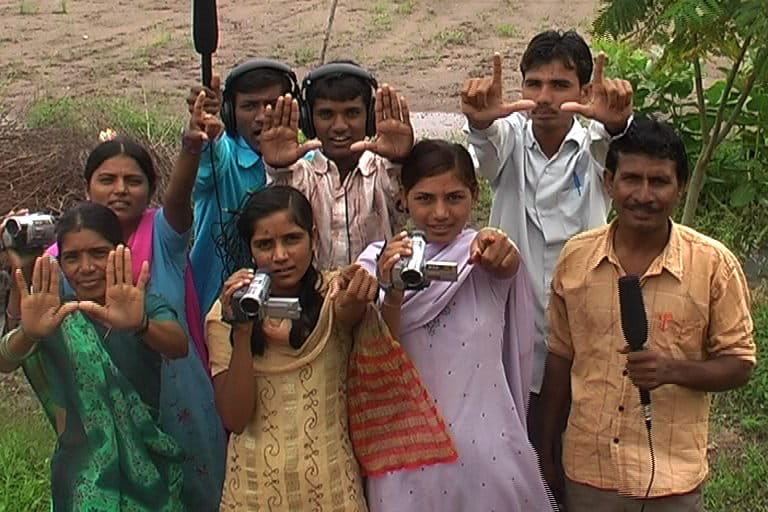- The 21st century is seeing the impacts of modernisation of the previous century. The most apparent impact is climate change.
- Land is intertwined with the human trajectory and powers of access to land come from social, political or other kinds of dominance, writes Nikita Sud in this commentary.
- By recoginising the many lives of land, it allows us to better appreciate, and strengthen, political processes that are less extractive and centralised, and more democratic.
The 20th century can be characterised by its preoccupation with modernisation. Modernisation was to be achieved through the institutional control of nature. States, and private firms supported by states, manipulated water and water courses, land, flora and fauna, and even air to grow their economies. In this extractive model, nature was the base over which human societies established their mastery. With nature treated as a base, land too is seen as out there. It is to be harnessed and built upon.
The 21st century demands rather different engagements with land, and nature. After all, in this century, we are seeing the effects of our 20th century obsessions. The most apparent effect is climate change, where resource frontiers have been breached through over-exploitation. Our earth cannot sustain our greed for natural ‘resources’.
Another effect is the rise of authoritarian populism. Across the globe, we are seeing the advance of the centralising, top-down strongman politician. He works with chosen interests in private business to channel natural and other resources to them. The rents or corruption income earned through these oftentimes shady alliances are used to funnel votes and popular adulation to the strongman.
If land and nature are tied into our everyday lives in such fundamental ways as to be shaping and re-shaping our economies, polities, societies, and ecologies, we cannot afford to go on seeing them as inanimate ‘things’ today.
In the case of land, how should we re-read and re-engage with it? I suggest land in the everyday as the surface of the earth and what lies below it, plus us. It is neither just a resource to be commodified for the market. Nor can it realistically be seen as pristine nature, cut off from the human. Like air, water, plants, and many non-human animals, land is by now utterly intertwined with the human trajectory. Think of New Delhi or Beijing’s air, which is hard to conceptualise minus the human imprint that runs through it. Think also of land, water, air and non-humans in the Arctic region, which are also tied in with the human trajectory, for better or worse.

Citizen journalists learn video skills to campaign for land rights in Gujarat, India. The power of access to land is usually linked with a person’s social or political dominance. Photo by Tactical Technology Collective/Flickr.
Like us, land has varied socialised dimensions or lives. In these many lives of land, we can of course discern property and commodity, and much else besides. Land in its multiple dimensions is (a) enlivened. Humans engage with it as identity, ancestry, history, and as home to the sacred. Land is also (b) territory. It is an ordering device tied in with the logic of the state or other ruling structures. Territory defines the remit of the state, and is used to order and control who belongs and who doesn’t; who can be let in and who must be kept out. (c) Land is the authority of the state, played out in space. The state asserts its authority over land via practices of policy-making and politics. (d) One of these practices of authority-making is the state adjudicated right to property. (e) In addition to being a manifestation of authority, and property, land is access and the powers of exclusion. This is the ability to benefit from something, rather than the right that comes from being a property-owner. Powers of access for yourself, to the exclusion of others, come from social, political or other kinds of dominance, again identifying land with human trajectories.
We can re-read vibrance and multi-dimensionality into land. The question then arises: so what? What is the point of broadening our horizons on this topic? If the 20th century was about our one-way engagement with land, or at least so we thought, the 21st century must recognise the human-land interaction as a two-way process. We act on land, but the land also acts on us. We make and re-make land as territory, property, authority, and more. Our societies, polities and economies too are made and re-made in turn.
To take but one example, the latter process is all too evident in India’s current contestations around a new slew of citizenship laws and proposals. Here, we see the state asserting its authority on territory to re-define who belongs and who does not; who India will allow in as valid citizens, and who will be threatened with internment in detention centres as a doubtful citizen, or even made stateless. As the state tightens its control over land as territory, it is cast even more in an authoritarian mould.
The authoritarian state has retained most of its representative formal institutions. This state is able to construct active popular consent around itself through a moral syntax of good versus evil, national versus anti-national, and the choice between anarchy and order. Amidst the seeming threat of social disorder– the enemy at the borders, disruptive and disloyal minorities, and other sorts of dissidents within– the need for authority is underlined to build consent around the authoritarian state and its strongman leader.

By recognising the many lives of land, we are able to discern how and to what extent such new forms of politics are forged around socio-nature. This recognition may also allow us to better appreciate, and strengthen, political processes that are less extractive and centralised, and more democratic. In this mould, public hearings around big infrastructure or industrial projects are not just a formality to be got done with. Instead, they are the foundation of a stronger polity, tuned in to the rhythms of ecology.
Once we appreciate the manifold ways in which land and our lives intersect and build off each other, we will hopefully develop a renewed sensibility with relation to the natural world. In this renewed sensibility, we exploit and decimate land at our own peril. After all, we make the land and the land makes us. In the same way, we decimate the land, and the land eventually decimates us.
The author is an associate professor teaching at Oxford University. Her book “The making of land, and the making of India” is forthcoming with Oxford University Press.
This blog was originally published by Mongabay.


